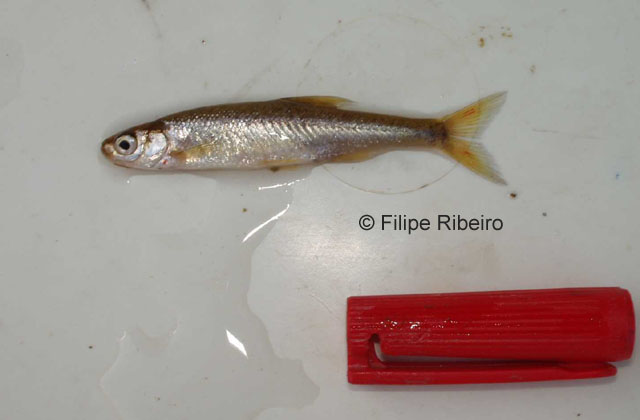| Leuciscidae (Minnows), subfamily: Leuciscinae |
| 7.5 cm FL (male/unsexed); max. reported age: 3 years |
|
pelagic; freshwater |
| Europe: Guadiana drainage in Spain and Portugal (Ref. 59043). Considered the most endangered primary fish in Iberian waters (Ref. 13392). |
|
The only species of the genus which can be diagnosed from other species of Cyprinidae in Iberian Peninsula by having upturned mouth, dorsal origin behind pelvic fin base, scaleless keel between pelvic fin and anus, 58-73 total scales in midlateral row, incomplete lateral line with perforating 2-23 scales (sometimes absent) and 84-130 gill rakes (Ref. 59043). |
| Inhabits small streams with swift current (often pools in summer) and pebble to rock bottom, usually without submerged vegetation (Ref. 59043). Reported to occur in lowland streams with a moderate current and abundant submerged plants. Pelagic filter feeder (Ref. 26100) . Feeds on filamentous algae and small invertebrate. Migrates upstream to spawn then returns to downstream areas at beginning of summer, where permanent water is retained throughout the year (Ref. 59043). Due to its threats such as habitat destruction and water pollution (Ref. 26100), a conservation project started under the EU-Life Nature program (Ref. 59043). |
|
Endangered (EN); Date assessed: 31 January 2006 (A2ace) Ref. (130435)
|
| harmless |
Source and more info: www.fishbase.org. For personal, classroom, and other internal use only. Not for publication.

